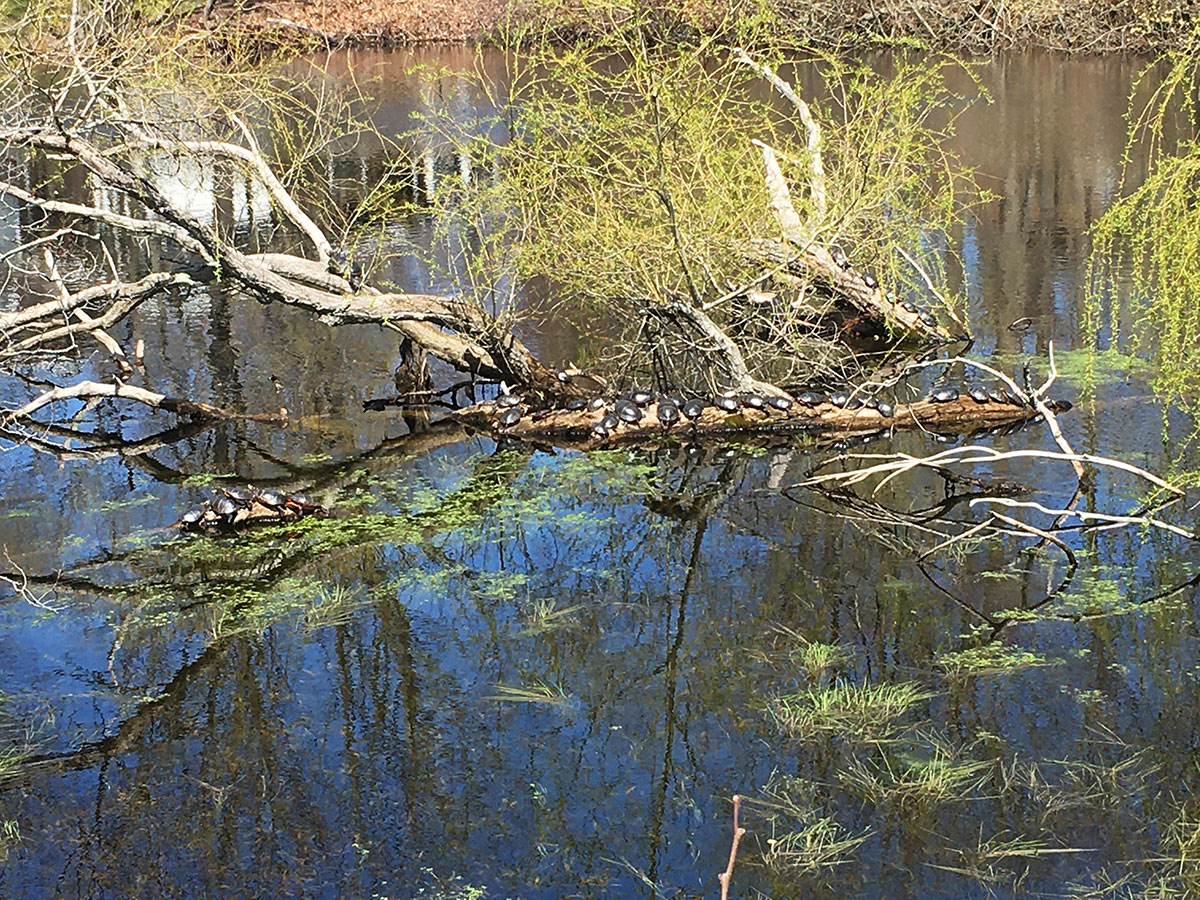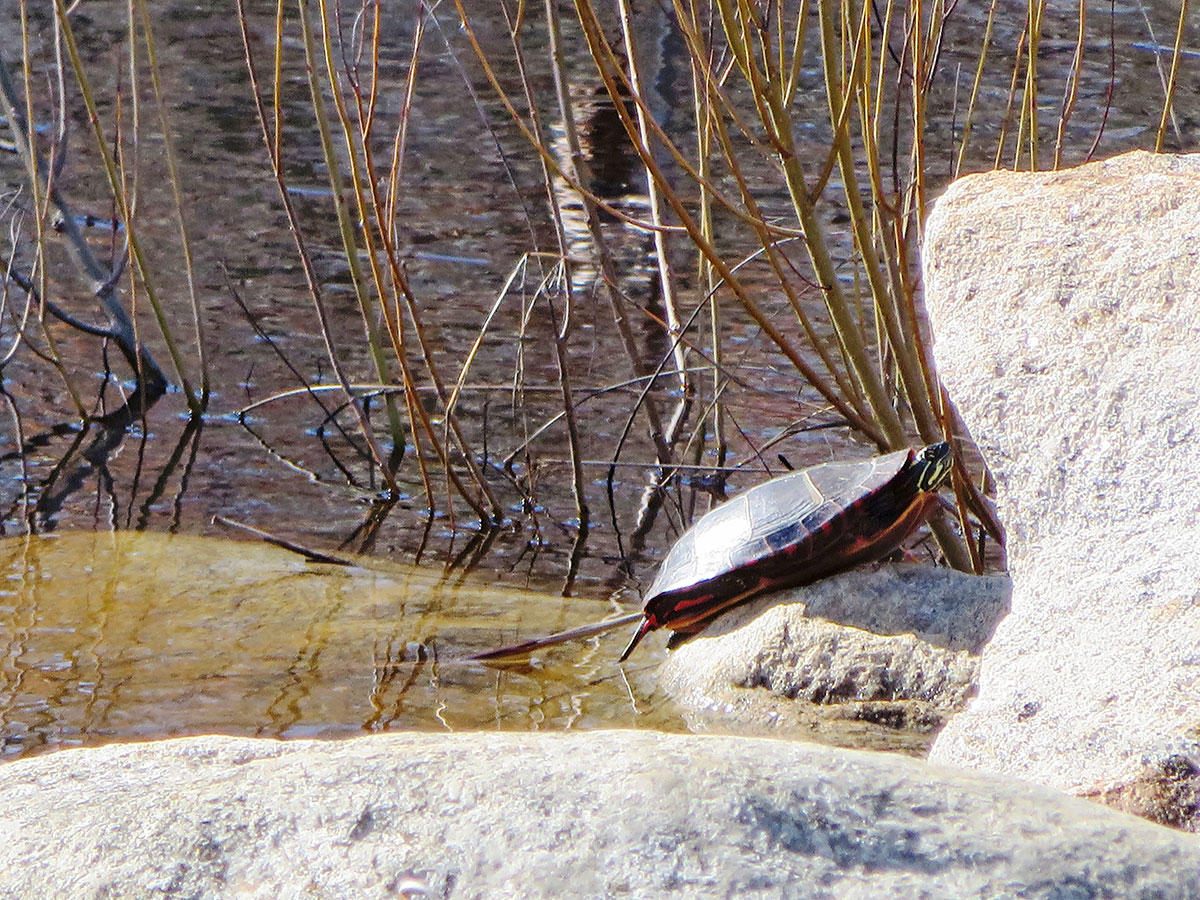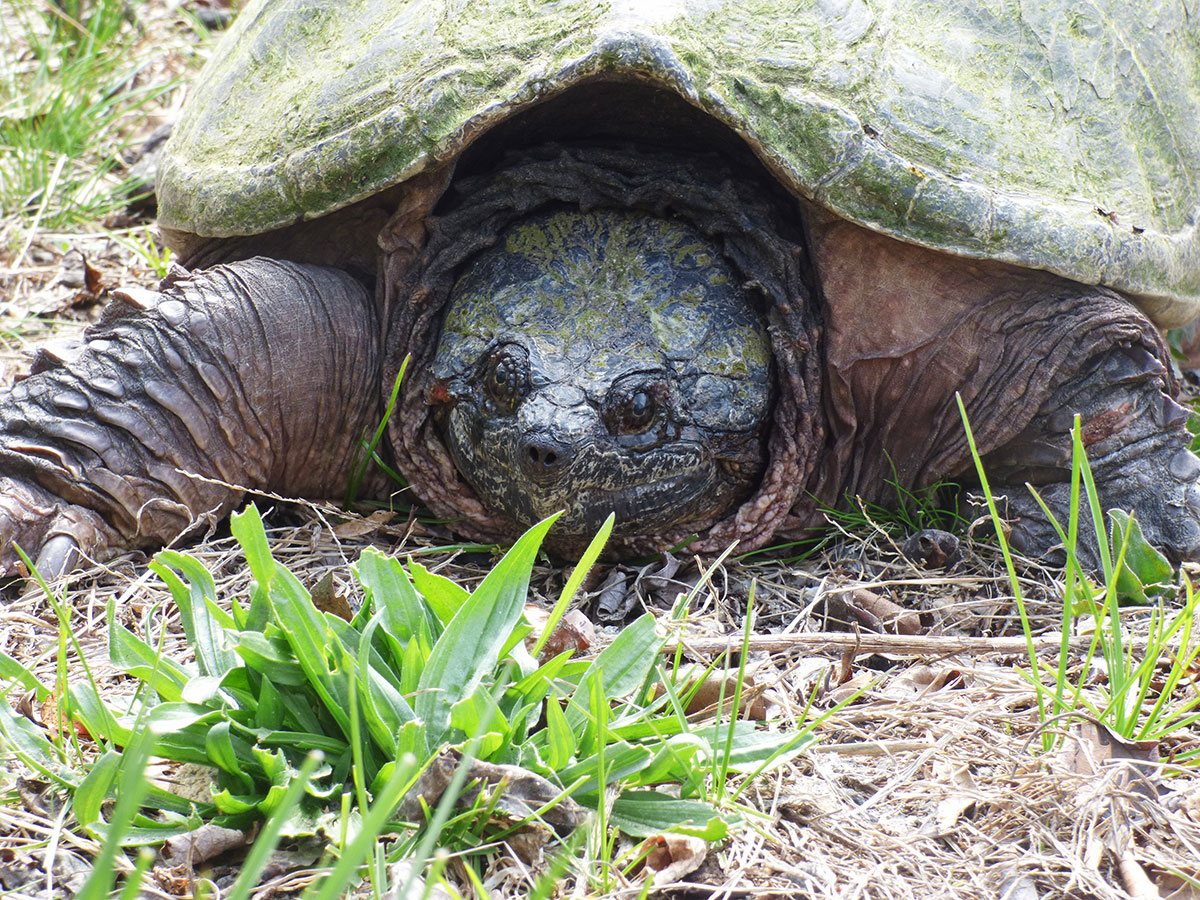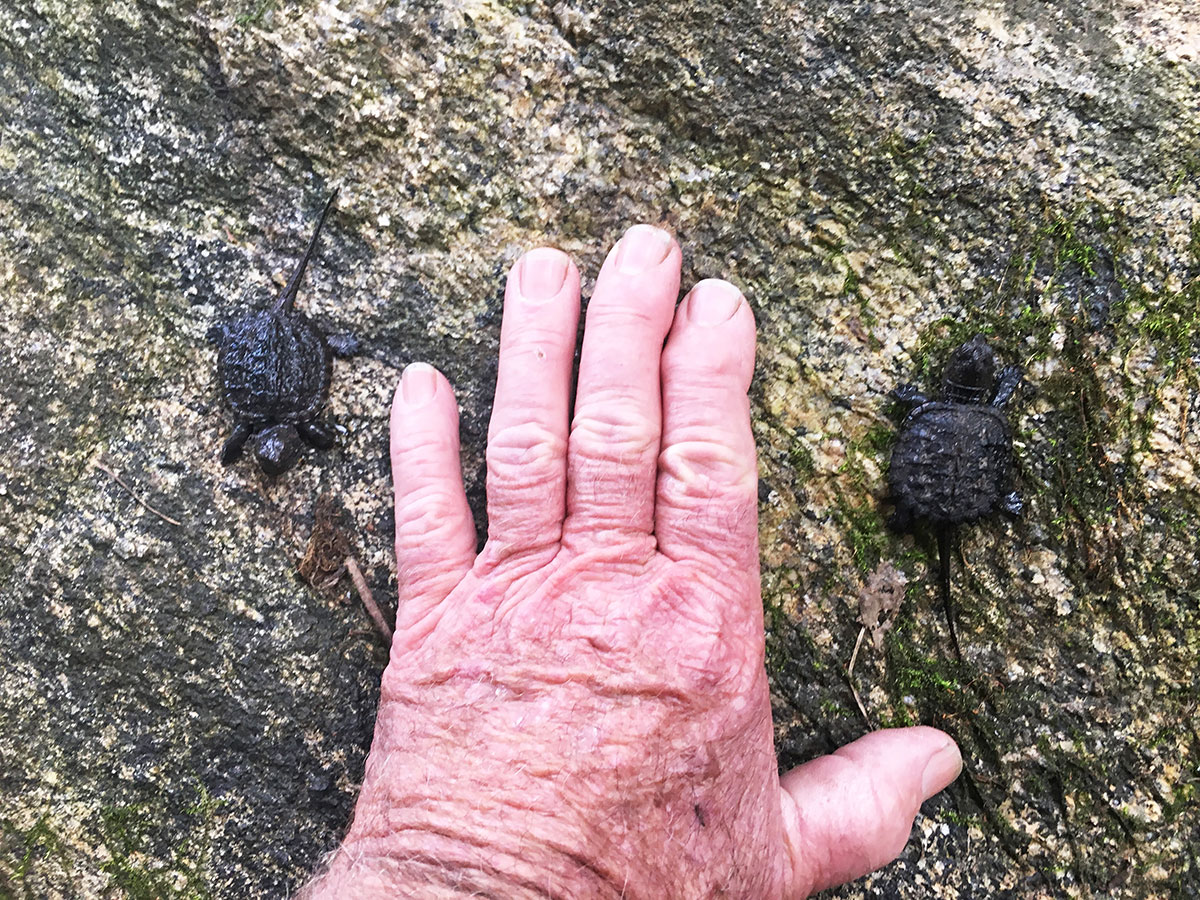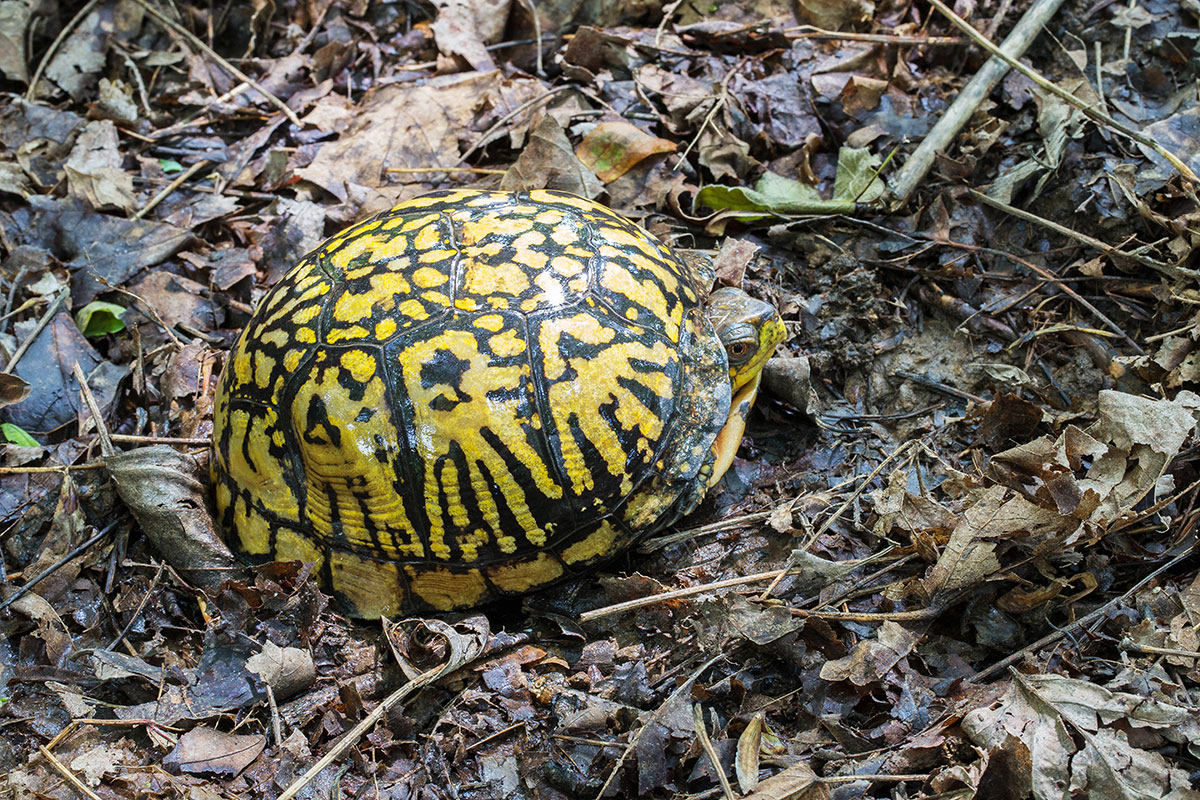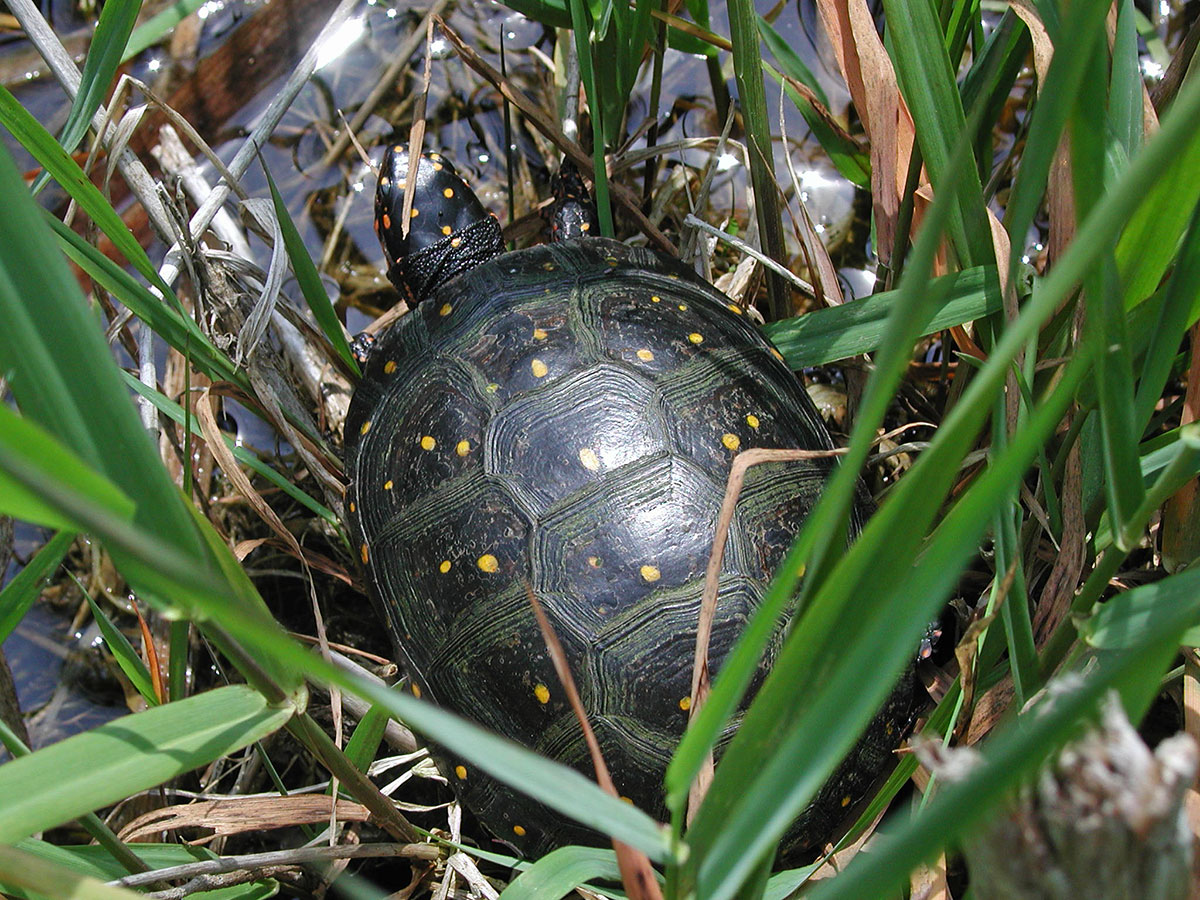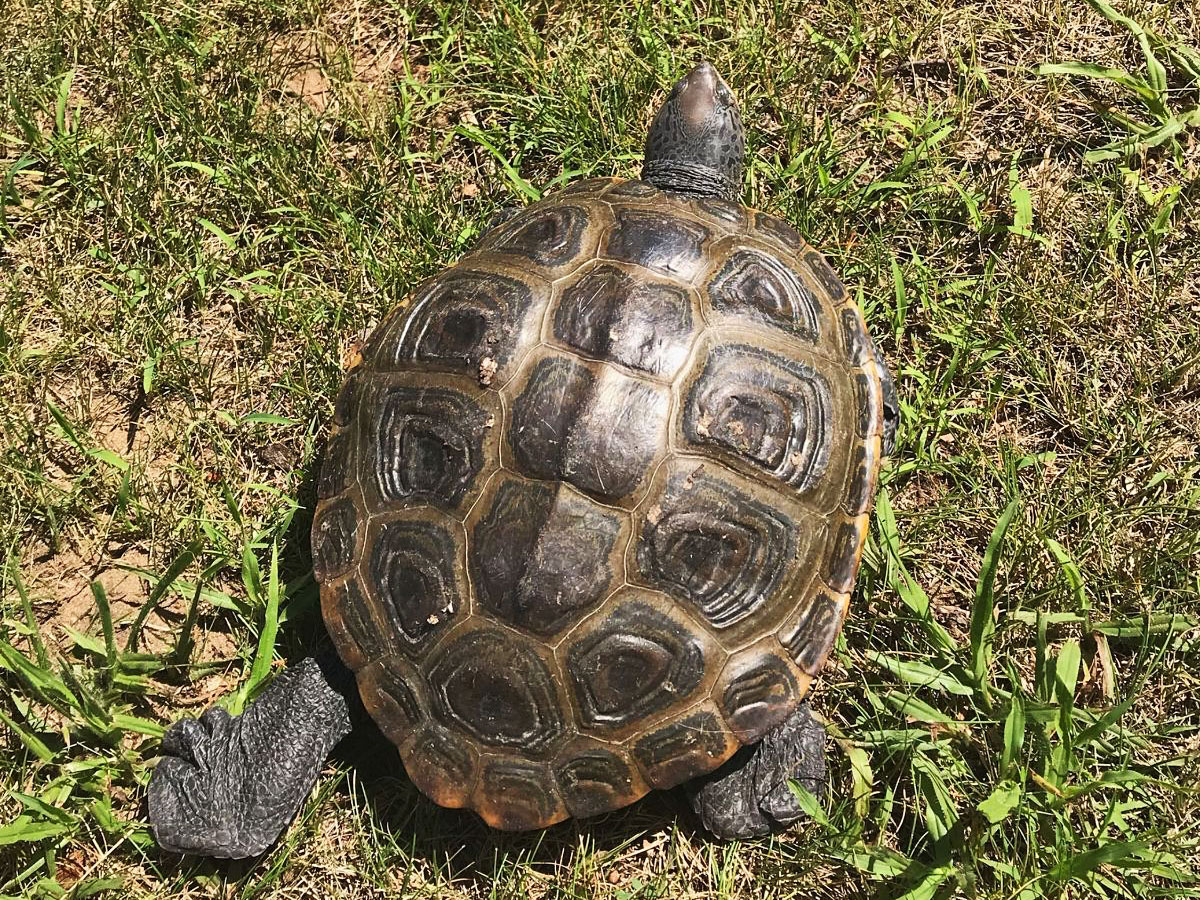ANNUAL EXHIBITION 2021
TURTLES
A profusion of Eastern Painted Turtles (Chrysemys picta) at Duck Pond
Photograph by Steve Zettler
The Painted Turtle is without doubt the most common and conspicuous turtle on Fishers Island. As temperatures start to rise in the spring, they can be seen basking on rocks and logs at ponds throughout the island, especially the Duck Pond.
Eastern Painted Turtle
Photograph by Murray Fisher
The Painted Turtle, small to medium in size, has a smooth carapace bordered with yellow and red markings. “It can also be identified by its yellow neck stripes and the red and yellow stripes on its legs. The plastron (or belly portion of the shell) is yellow-orange.”
Quote from Fresh Water Turtles of Fishers Island by Penni Sharp, HLFM Nature Notes, Spring 2014.
Common Snapping Turtle (Chelydras serpetina)
Photograph by Justine Kibbe
“Another common island turtle is the Snapping Turtle, the largest freshwater turtle in the northeastern United States…These turtles are easily recognized by their carapace which is bordered along the rear by saw-tooth plates. The fairly long plated tail is also distinctive. They have large heads, long necks and a sharp hooked beak. Snapping turtles tend to be aggressive, thus should be handled with care or not at all.”
Quote from Fresh Water Turtles of Fishers Island by Penni Sharp, HLFM Nature Notes, Spring 2014.
Adult Snapping Turtle
Photograph by Justine Kibbe
“An omnivore, snapping turtles consume aquatic plants, fish, crayfish, and occasionally ducklings. Plants and non-game fish are the preferred diet…Adult snapping turtles have few natural enemies and are killed primarily by humans out of fear or due to presumed attacks on waterfowl and game fish.”
Quote from Fresh Water Turtles of Fishers Island by Penni Sharp, HLFM Nature Notes, Spring 2014.
Eastern Box Turtle (Terrapene carolina)
Photograph by Ryan Hagerty, USFWS
This mid-sized terrestrial turtle features vivid orange and yellow markings on its high, rounded shell. Although quite rare on Fishers Island, there have been at least two recent sightings, one of an adult in the spring of 2021 (east end Main Road near turn off to Top of the World) and one of a juvenile in October 2020 (near Isabella Beach Road).
If you discover one of these distinctive turtles, please photograph it and report the location along with the date to the Museum.
Juvenile Eastern Box Turtle (Terrapene carolina)
Photograph by Jack Schneider
This juvenile Eastern Box Turtle was discovered near Isabella Beach Road in the fall of 2020. Please note that its carapace markings vary considerably from those of an adult, leading some to mistake it for a Spotted Turtle.
Spotted Turtle (Clemmys guttata)
Photograph courtesy of New York Natural Heritage Program
The last recorded sighting of this rare species on Fishers Island was in 1991, more than 30 years ago. It may be that they are no longer extant here. However, scientists from the New York Natural Heritage Program are currently undertaking an inventory of rare floral and faunal species on Land Trust properties and will make every effort to locate Spotted Turtles during their 2021/2022 study.
Diamondback Terrapin (Malaclemys terrapin)
Photograph by Jeff Edwards
Named for the diamond-shaped patterns on its carapace, both the patterning and coloration vary greatly from turtle to turtle within this species. Diamondbacks exclusively inhabit coastal areas with brackish water. They are strong swimmers with webbed feet and thick, muscular legs that aid their navigation through coves, tidal marshes, and inlets subject to currents and tidal surges.
In recent years, Diamondbacks have been documented near Island Pond, also known as Oyster Pond, a body of water that has been brackish since it was breached by the 1938 Hurricane, restored as a fresh water pond, and breached again by another hurricane in the 1940s.

